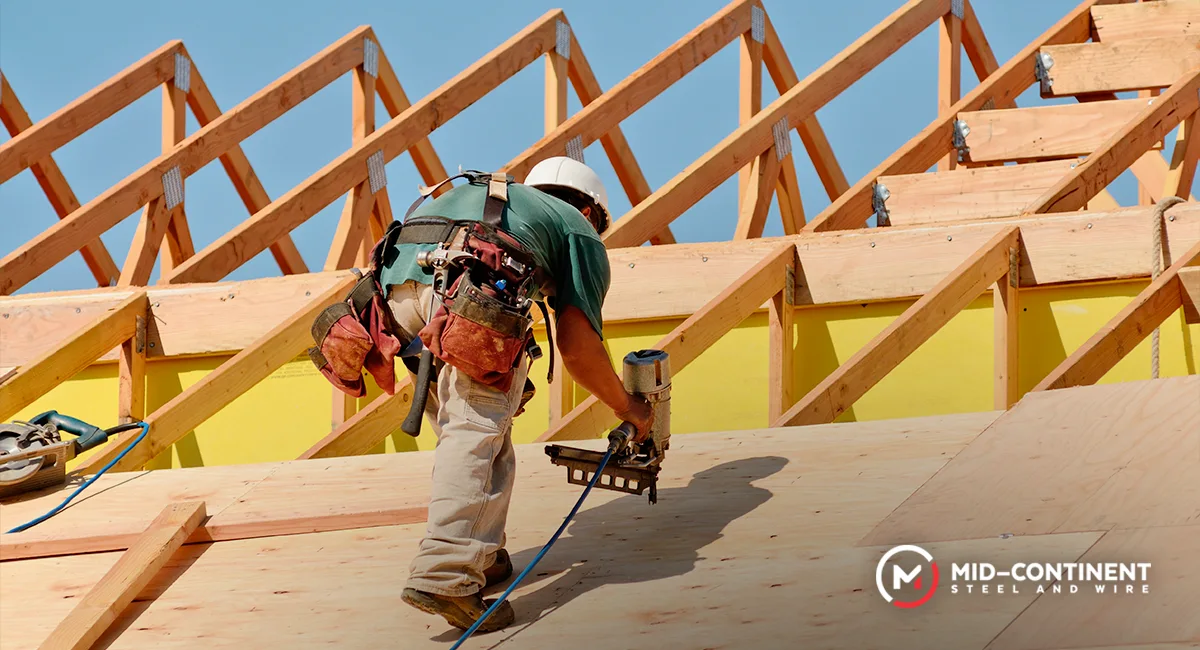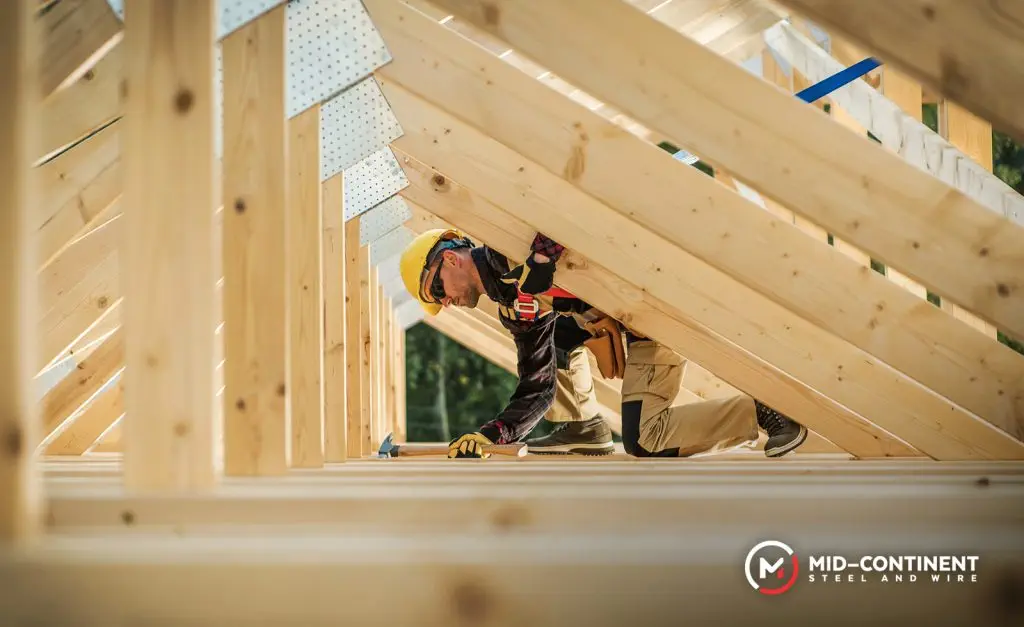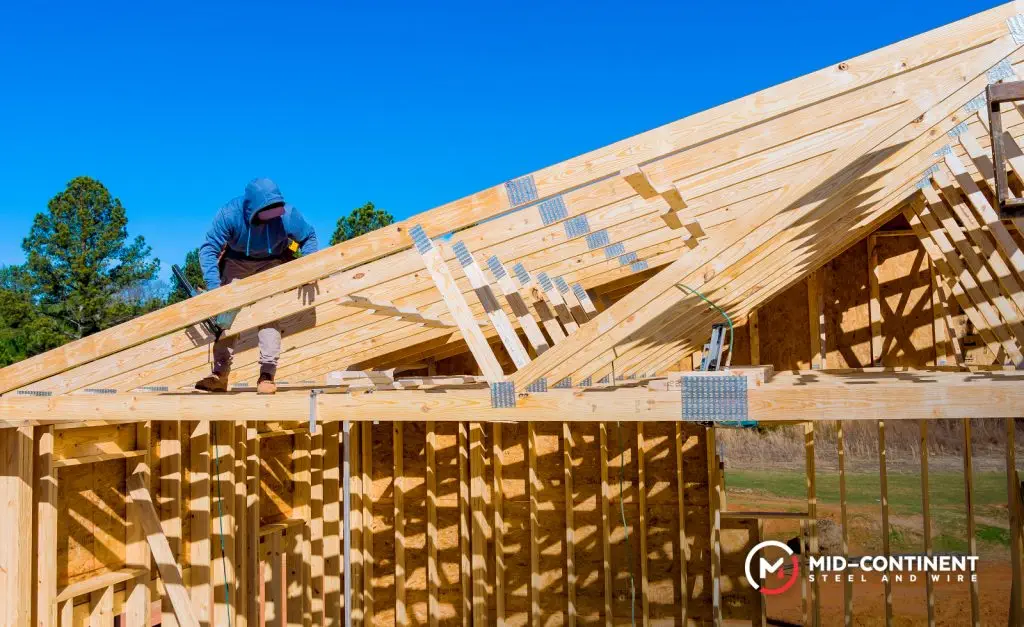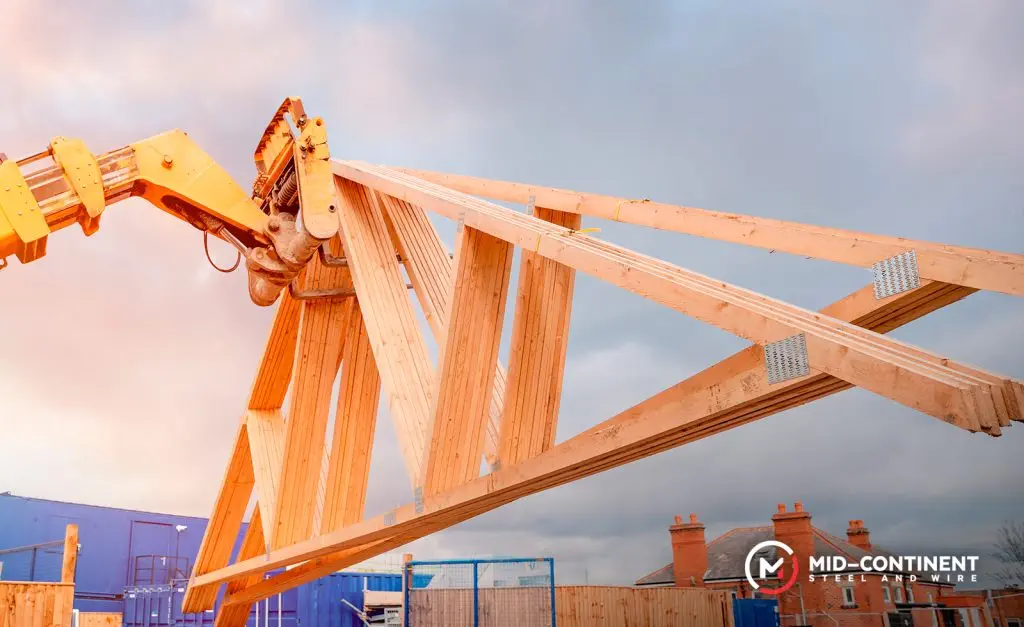
Do you know how roofs are built? The differences in the design can have a multiple array of different requirements. Some roofs can be built on-site, also called stick-built, using ridge boards, rafters, collar ties, and chords. Others are prefabricated, such as trusses, which are then lined up and fastened in place, connected with roof sheathing.
Both types of roof construction have their unique advantages, let’s take a look at the differences between the two roofing systems.

Conventional stick framed roof structure
When you envision a conventional roof of a house, you probably think of rafters: pieces of wood cut to determined sizes and fastened together. Homes with this type of roofs are called “stick framed roofs” or “stick-built” houses.
Here are the basic definitions, as well as pros and cons of this type of roof building process.
- Rafter Board: Rafter boards are the structure that create the slope of the roof for home construction. These boards are fastened to the ridge board at the peak of the roof and at the top plate where they join the wall.
- Ridge Board: This is the board that creates the peak of the roof and isn’t typically a load-bearing structure. It is usually built the same size as the rafter boards. In some cases, such as with ridge beams, a larger size of lumber that can bear a structural load might be used instead.
- Ceiling Joist: This is a type of board that acts as the bottom chord of the rafters and forms the ceiling of the space below.
- Collar tie: This length of dimensional lumber connects the rafters of a gable roof at the rafter span to counteract the spreading of the rafters.
Choosing stick framing roofs means you’d have to create each rafter on the job site. This can become a benefit if you are building in a remote location, since it’s easier to transport raw materials rather than something larger and bulky.

Roof trusses and their benefits
A roof truss is a prefabricated wooden structure that connects the exterior walls of a house and provides structural support for the roof sheathing, underlayment, and shingles. Roof trusses are commonly fabricated off site and are built with a more precise process, since they are created to match the exact requirements of your home with better precision.
Parts of a Truss-Built Roof
- Rafters or Top Chords: These boards form the top of the truss.
- Bottom Chords: They form the base of the truss roof.
- Web Bracing: These structures connect the top and bottom chords.
Main characteristics of prefabricated trusses
- They help frame and support the roof and overall structure
- Trusses are usually computer designed and prefabricated
- Their construction is sturdy and they come in various designs
- Trusses are less expensive than rafters, but have a few limitations for further construction

Stick Framing vs Roof Trusses
Both stick and truss roofs have their own advantages for certain situations, consider these factors to make sure you select the best choice for your construction.
Roof trusses:
- Better when the build-site is easy to access, as you will possibly need a freight truck to transport them.
- Provide opportunity for a crawl space that doesn’t need to be used for a large storage area or attic space.
- Are usually more economical, since trusses are made off-site, labor cost is often reduced.
- Trusses require more lead time for delivery to the building site.
Rafters:
- Provide opportunity to build an attic that can be used as a living or storage space.
- Usually more expensive, since they require on-site labor.
- Rafters typically require more time on-site for building.
No matter which type of roof construction process you decide on, it is important to know the specifics of roof trusses and stick framing. Mid-Continent Steel and Wire provides you with high quality materials that can strengthen and create better foundations for your construction.